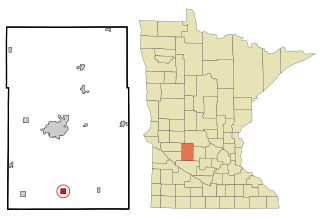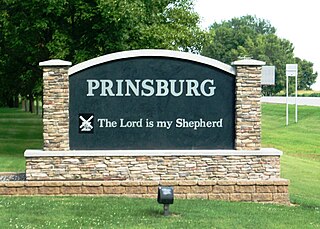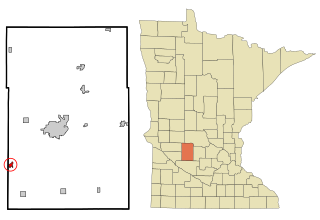
Kandiyohi County is a county in the U.S. state of Minnesota. As of the 2020 census, its population is 43,732. As of November 20, 1871, its county seat is Willmar.

Atwater is a city in Kandiyohi County, Minnesota, United States. The population was 1,124 at the 2020 census.

Blomkest is a city in Kandiyohi County, Minnesota, United States. The population was 157 at the 2010 census.
Colfax Township is a township in Kandiyohi County, Minnesota, United States. The population was 557 at the 2000 census.
Dovre Township is a township in Kandiyohi County, Minnesota, United States. The population was 1,968 at the 2000 census.
Gennessee Township is a township in Kandiyohi County, Minnesota, United States. The population was 458 at the 2000 census. The township includes the city of Atwater.
Holland Township is a township in Kandiyohi County, Minnesota, United States. The population was 369 at the 2000 census.
Irving Township is a township in Kandiyohi County, Minnesota, United States. The population was 787 at the 2000 census.

Kandiyohi is a city in Kandiyohi County, Minnesota, United States. The population was 491 at the 2010 census.
Kandiyohi Township is a township in Kandiyohi County, Minnesota, United States. The population was 600 at the 2000 census.

Lake Lillian is a city in Kandiyohi County, Minnesota, United States. The population was 238 at the 2010 census.
Lake Lillian Township is a township in Kandiyohi County, Minnesota, United States. The population was 221 at the 2000 census. The township is named after the wife of Edwin Whitefield, Lillian. Edwin come and explore this area in 1856 and created paintings of the area.

New London is a city in Kandiyohi County, Minnesota, United States along the Middle Fork of the Crow River. The population was 1,251 at the 2010 census. Sibley State Park is nearby. It was named after New London, Wisconsin, by Louis Larson because of the similarity he saw with his previous home there. It was incorporated on April 8, 1889. The city was the temporary county seat of Kandiyohi County from 1867 to 1870.

Prinsburg is a city in Kandiyohi County, Minnesota, United States. The population was 497 at the 2010 census.

Raymond is a city in southwest Kandiyohi County, Minnesota, United States. The population was 764 at the 2010 census.
Roseland Township is a township in Kandiyohi County, Minnesota, United States. The population was 477 at the 2000 census.

Spicer is a city in Kandiyohi County, Minnesota, United States situated on Green Lake. The population was 1,167 at the 2010 census. Sibley State Park and many surrounding lakes are nearby.
St. Johns Township is a township in Kandiyohi County, Minnesota, United States. The population was 386 at the 2000 census.
Whitefield Township is a township in Kandiyohi County, Minnesota, United States. The population was 571 at the 2000 census.










